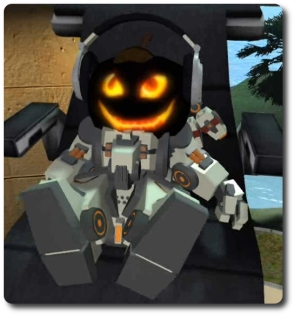The following summary is taken from the TPV Developer meeting held on Friday November 1st. A video, courtesy of North, can be found at the end of this report. The numbers in braces after each heading (where given) denote the time stamp at which the topic can be listened-to in the video.
General Viewer News
As noted in part 2 of this week’s report, there are currently two release candidates in the LL viewer release channel, the GPU Table RC, which contains updates to the viewer’s GPU table but no functional changes, and another Maintenance RC, which includes finer access control for estate/parcel owners; CHUI: toggle expanding Conversations by clicking on icon + more.
It is expected the Google Breakpad RC will be returning to the RC channel in week 45 (see below).
Several of the remaining anticipated viewer RCs / project viewers, again as previously reported, held-up as a result of issues uncovered in QA and / or bugs being re-introduced into them. These include:
- The Group Ban List viewer: work here, which involves server and viewer changes, is held-up as a result of QA testing revealing some issues which Baker Linden is addressing (as per part 2 of this report)
- The interest list viewer, which recently saw the issue of objects failing to render without a relog return to the code after having been fixed, and which still has one or two other issues to be fixed, although Oz Linden feels those working on it are homing in on solutions
- The HTTP viewer updates, which were for a time awaiting QA resources (see below for a further update).
AIS v3
[02:29-07:07]

The Lab is keen to start progressing this work towards a release. As with Server-side Appearance, they’re looking to TPVs to help with various aspects of testing. To this end, a request has been passed to TPVs that they indicate to the Lab when they have merged the code into experimental versions of their viewers so that a pile-on test can be arranged in order to put the updates through their paces.
There is no specific date for when this will take place, and commenting on the project in general, Nyx Linden said:
Now is a good time to start your merges, I’ve just pushed an updated to Sunshine external, so you guys should have our latest and greatest … But again, this is not formally QA’d, we’ve been testing things as we’ve been going on, but it is not ready for release yet. But now is a good time to start doing test merges and getting side branches up-to-date with that.
The latest code includes a fix to viewer-side behaviour. On logging-in to Second Life, the server sends a list of the things it believed an avatar was wearing, although the message only had room for one wearable of each type (e.g. undershirt, shirt, jacket, etc.), and so it may or may not be up-to-date with the Current Outfit folder.
While the current release versions of the viewer ignore the contents of the message, they do still wait on the message for timing (thus slowing down avatar processing). With the new code, the timing pause is being done away with, so that the viewer should be able to start resolving the avatar from the Current Outfit Folder whether or not the message has been received. There is a slight side-issue with this change that may affect some avatars under limited circumstances, but a fix for this issue is due to be made available to TPVs before the code even reaches any experimental versions of their viewers.
Viewer Crash Reporting
[09:00-14:50 and 26:03-31:15]
There is an issue with the viewer crash reporting which means that a lot of crashes are being incorrectly reported as viewer “freezes”. This is something the Lab is aware of and is working to address. The problem lies with a number of the mechanisms used to determine various types of crashes are not working, with the result that the associated crashes are being misreported as the viewer freezing.
As well as addressing this issue, the Lab has also been working in other areas related to Google Breakpad and crash reporting, including:
- Simplifying and cleaning-up the creation and interpretation of the marker files used to generate crash rate numbers
- Re locating these files much earlier in the viewer initialisation and log-out processes so that crashes which occur during the viewer’s initialisation or termination can also be captured
- Addressing those crash reports which are generated, but lack associated stack dumps or mini-dumps and ensure that in the future that do have the required information, thus allowing the Lab to fill-in more of the blanks and ensure even more meaningful data is gathered as a result of crashes.

It will be a while before this work is ready for inclusion in viewers; one reason for this is because the improvements to Google Breakpad require continual rounds of user testing as changes are made (hence why the Google Breakpad RC appearing and vanishing and reappearing in the viewer release channel). However, once the code is ready for release, it should provide for more accurate crash reporting across all viewers. As the work comes to fruition, it should allow for more accurate identification of a range of crash situation and assist with the work in trying to eliminate them.
Continue reading “SL projects update 44 (3): viewer, AIS, and HTTP”




